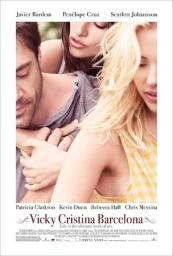/ Home / Attractions / Parc GüellPrint version
Parc Güell
.JPG.medium.jpg) .JPG.medium.jpg) .JPG.medium.jpg)
|

|
Historic information
The Parc Güell is the wonderful result of a failure. Its promoter, the aristocrat Eusebi Güell, wanted to build a garden city on the site of the Can Muntaner de Dalt estate, located in the district of La Salut in Gràcia. The grounds of the estate covered a large area but they were not ideal for this type of building. The park was located 150 metres above sea level on uneven, poor quality land. In 1900, Antoni Gaudí was commissioned to design the project. Only three plots had been sold in the early years of the century and this brought the project to the brink of failure. Building work came to a halt in 1914. The only remaining elements from this ambitious venture are a series of extraordinary structures by Gaudí designed for communal use, which include the stone viaducts which are perfectly integrated into the landscape and connect the different levels, and the plaza with its curving mosaic bench.
The Parc Güell was purchased by Barcelona Municipal Council and made into a public park in 1922. It is a truly unique park and was declared a World Heritage Site by UNESCO in 1984.
The Parc Güell was purchased by Barcelona Municipal Council and made into a public park in 1922. It is a truly unique park and was declared a World Heritage Site by UNESCO in 1984.
In order to know the zone better
The park is surrounded by a fence topped with ceramic tiles and medallions bearing the inscription “Parc” and “Güell” made with the traditional “trencadís” mosaic technique which uses pieces of broken tile. These medallions provide a kind of logotype for the park and there are 40 of them located around the park grounds. The main entrance is on the Carrer Olot, between two gatehouses which were once home to the park caretakers. The roofs of both gatehouses are topped by mushroom-shaped domes. As you enter the park, you come to the magnificent staircase divided into two symmetrical sections by a series of figures: the serpent’s head with the four stripes, the popular dragon (which has become one of the city’s icons) and the unusual tripod with its unclear symbology. Just above the staircase, an impressive hypostyle chamber underpins the plaza above. The chamber occupies a space formed by 86 Doric columns. The side of the vast plaza overlooking the city is bounded by the famous curved bench which is a marvel of form, colour and contrasts. In order to make the bench, Gaudí was helped by Josep Maria Jujol, a specialist in “trencadís” design. It creates the effect of a giant collage. Gaudí was very interested in ensuring the maximum communication between the different areas in the park. This is why he constructed a network of paths and a series of three viaducts to connect the different levels. The park is home to the Gaudí Museum which is located in the house where Gaudí lived from 1906 until 1925.
|
Scene description
Vickcy Cristina Barcelona
.JPG.medium.jpg) .JPG.medium.jpg) .JPG.medium.jpg)
Parc Güell: The staircase at the main entrance is the location chosen for the first meeting between Vicky (Rebecca Hall) and Juan Antonio (Javier Bardem) after their trip to Asturias. The tense conversation takes place against the backdrop of the famous colourful dragon which welcomes visitors into the park.
The gatehouse and Bugaderia viaduct are other areas of the park featured in the film. |
Did you know that...
This was one of the first locations used in the film. Of the two scenes filmed in Park Güell, the most visually stunning shows the conversation between Juan Antonio and Vicky on the steps of the main entrance to the park. The mosaic dragon can be seen with them in the foreground forming a colourful, luminous triangle. The flow of water from the jet in the dragon’s mouth had to be slowed down because the actors’ voices couldn’t be heard above the noise of the water.
|
The Barcelona of Woody Allen
/
Parc Güell

